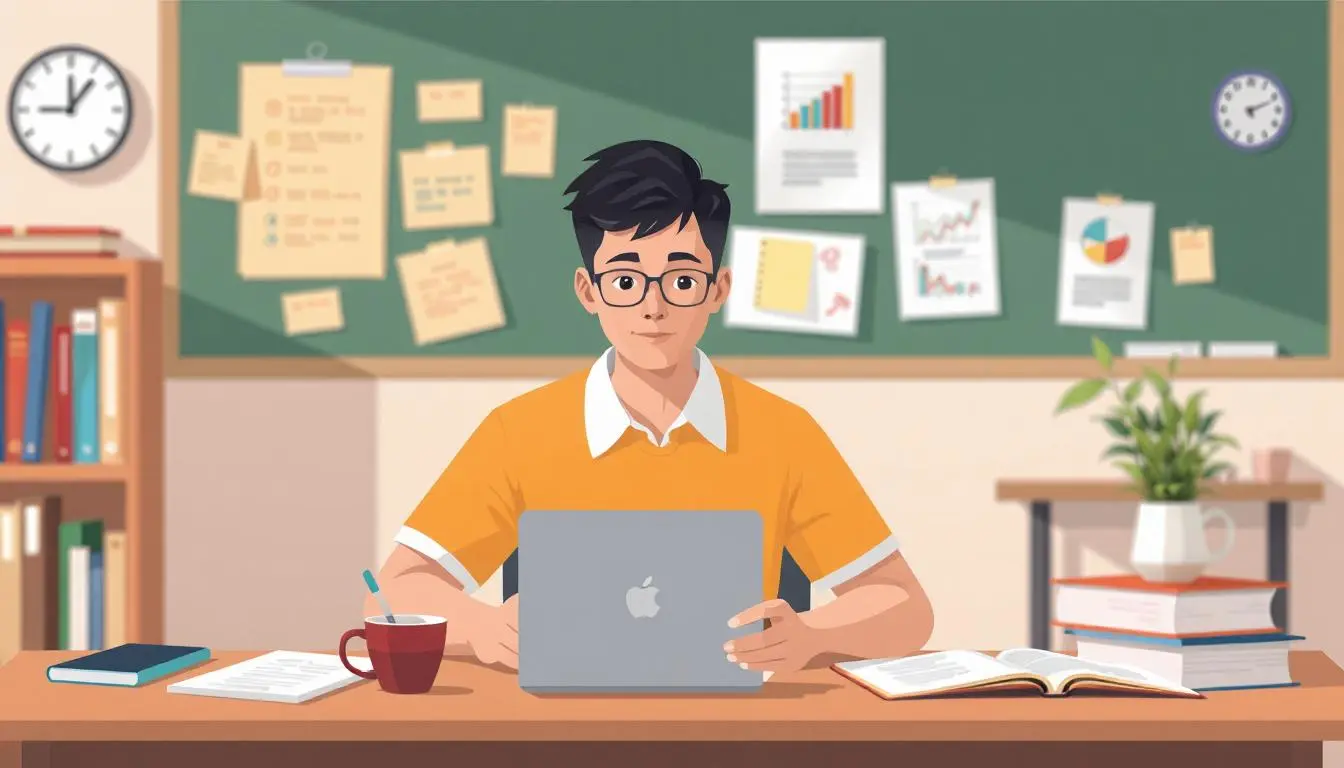Table of Contents
Toggle📘 1. Introduction
- Efficient notetaking is a very effective academic skill that enables students to commit information to memory, focus on lectures, and prepare for examinations. However, simply writing everything down is not effective. Smart notetaking requires a strategy.
- In this guide, you’ll learn about better, faster, and more organized notes that can be the leverage to transforming your study. It doesn’t matter whether you’re in high school or college or preparing for competitive examinations; this guide will help you build a strong note-taking system.
🎯 Importance of Note-taking
Note-taking is less about writing down material and more about learning. Research demonstrates that the pen-on-paper act of writing notes actually improves comprehension and memorization. Well-kept notes do several other good things too:
- Keep you awake during the class.
- Save you time in revision.
- Clarify concepts that were difficult to understand.
- Increase performance in examinations.
✅ 1. Get Prepared before Lectures
Great notes are created long before one walks into class.
📌 Do This:
- Glimpse over prior notes Of the area to be treated, glance through for an overview
- Prepare templates or formats in your notebook (i.e. headings, bulleting)
🔧 Tools:
- Set up notes online using Google Docs or Microsoft OneNote.
- For a more traditional approach, try physical notebooks with subject dividers.
✅ 2. Notes on Key Points, Not Each Word
You can never write down everything the teacher is saying; instead, listen actively and include:
- Main Ideas
- Key Words
- Definitions
- Dates and Figures
Examples
💡Tip: Use symbols, e.g., → for causes, ★ for important, ? for? confusion.
✅ 3. Use Abbreviations and Symbols
Speed up your note-taking with custom abbreviations:
| Original | Abbreviation |
|---|---|
| Important | ⭐ imp |
| Because | → |
| Example | e.g. |
| With | w/ |
| Without | w/o |
This helps you jot down more while keeping your notes neat and quick.
✅ 4. Review and Revise Notes Within 24 Hours
Reviewing soon after class strengthens memory and understanding.
🧠 Try This:
Highlight main points
Rewrite unclear notes
Add any missed details
Summarize the lecture in 5 lines
Tools like Notion, Google Keep, or even sticky notes help personalize and revise easily.
✅ 5. Stay Organized Digitally (or Physically)
Keeping notes tidy saves time during exams.
✨ Tips:
Name your files clearly:
Biology_Lecture1_CellsKeep physical notes in labeled folders
Backup digital notes on Google Drive or Dropbox
Consistency is key!
✅ 6. Organize It All, Digitally or Physically.
Typing notes somehow saves time in exams for many students.
✨ Tips:
- Keep file names descriptive: Biology_Lecture1_Cells
- Keep physical notes in labeled folders
- Backup digital notes on Google Drive or Dropbox
- Consistency is key!
- Have no 8 common mistakes.
Don’t:
- Copy them word by word from the slides
- write what you do not understand
- forget to revise
- only look at photos or recordings.
Do:
- Summarise it in your own words
- Ask questions in or well after class
- Link together related topics.
| Method | Best For | Tools |
|---|---|---|
| Cornell | Structured reviews | Pen & paper, OneNote |
| Mind Mapping | Creative learners | XMind, Canva |
| Outline | Linear notes | Notion, Docs |
| Charting | Comparison subjects | Excel, Sheets |
| Sentence | Fast lectures | Notebook, Keep |
📚 FAQ: Effective Note-Taking
Q1: What is the best method for taking notes?
- Ans.Every learner has a personalized attitude towards learning, which is why the best method differs from one person to another. For example, if you are a structured learner, the Cornell Method will work for you, whereas mind maps will be perfect for those who think more visually.
Q2: Should I take notes with my hands or with a computer keyboard?
- Ans.Both methods have their advantages! Writing something down by hand helps you to remember it better, while taking notes on a computer gives more organization and access to your notes.
Q3: How often should I be reviewing notes?
- Ans:Review after the lecture within 24 hours, then every week afterwards until the material is learned.
Q4: Note-taking speed increases through
- Ans:This speed of note taking can be used by typing into the keys or writing on the paper, using abbreviations, symbols, or structures like outlines or charts without losing clarity.
✅ Conclusion
- Effective note-taking is a skill and it improves with practice. Whether you like pen and paper or digital apps, the key to successful note-taking is consistency, regular review, and adaptation of the best system for you.
- Start applying these strategies today, and you will find that studying becomes less stressful and more productive.

